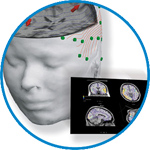- Home
- About ANT
-
Products

asa
asa is a highly flexible EEG/ERP and MEG analysis package with a variety of source reconstruction, signal analysis and MRI processing features.
.jpg)
eego mylab
The new frontier in multimodal brain research. With up to 16 kHz sampling rate, 256 EEG channels and unique software features, eego mylab gives you an unprecedented in-depth understanding of the human brain.

eego sports
eego sports offers complete freedom to collect high-density EEG data, bipolar EMG signals, and a variety of physiological sensor data, wherever and whenever required, with publish quality data in less than 15 minutes!

waveguard net
The waveguard net sets a new standard for research applications requiring high-density EEG data acquisition with quick preparation time, high flexibility, and subject comfort.

visor2
Our new and upgraded visor2 solutions integrate all the latest technologies for navigated rTMS, dual-coil navigation support, EEG-TMS recordings and pre-surgical evaluation for the highest quality in research and clinical procedures.

powerMAG ANT
The PowerMAG ANT 100 rTMS stimulator is designed for the specific needs of high-end TMS applications. Powerful high-frequency TMS as well as high precise single pulse and repetitive pulse protocols are combined in one single device.

xensor
xensor offers the solution for digitization of 3D electrode positions. xensor takes care of the whole procedure; it records, visualizes and stores positions acquired with a dedicated digitizer.

waveguard original
waveguard original is the cap solution for EEG measurements compatible with fMRI, MEG and TMS system. Use of active shielding guarantees performance in even the most demanding environments.

waveguard connect
waveguard connect EEG caps are a perfect match for hospitals and institutes aiming at reliable EEG, maximum uptime and great patient comfort! For optimal signal quality, the electrodes are made of pure, solid tin.

waveguard touch
waveguard touch is a dry electrode EEG cap. The unique Ag/AgCl coated soft polymer electrodes provide stable, research-grade EEG signals while maintaining subject comfort. The combination of these innovative dry electrodes and the industry-leading waveguard cap makes waveguard touch the best solution for dry EEG.

smartmove
smartmove allows planning of a complete TMS session ahead by defining stimulation sites based on anatomical MRI information and functional information like fMRI, PET or EEG/MEG.
Stay - References
- Support
- Events
- News
- Contact Us
You are here
Source localization of ictal epileptic activity investigated by high resolution EEG and validated by SEEG
Source localization of ictal epileptic activity investigated by high resolution EEG and validated by SEEG
High resolution electroencephalography (HR-EEG) combined with source localization methods has mainly been used to study interictal spikes and there have been few studies comparing source localization of scalp ictal patterns with depth EEG. To address this issue, 10 patients with four different scalp ictal patterns (ictal spikes, rhythmic activity, paroxysmal fast activity, obscured) were investigated by both HR-EEG and stereoelectroencephalography (SEEG). Sixty-four scalp-EEG sensors and a sampling rate of 1kHz were used to record scalp ictal patterns. Five different source models (moving dipole, rotating dipole, MUSIC, LORETA, and sLORETA) were used in order to perform source localization. Seven to 10 intracerebral electrodes were implanted during SEEG investigations. For each source model, the concordance between ictal source localization and epileptogenic zone defined by SEEG was assessed. Results were considered to agree if they localized in the same sublobar area as defined by a trained epileptologist. Across the study population, the best concordance between source localization methods and SEEG (9/10) was obtained with equivalent current dipole modeling. MUSIC and LORETA had a concordance of 7/10 whereas sLORETA had a concordance of only 5/10. Four of our patients classified into different groups (ictal spikes, paroxysmal fast activity, obscured) had complete concordance between source localization methods and SEEG. A high signal to noise ratio, a short time window of analysis (<1s) and bandpass filtering around the frequency of rhythmic activity allowed improvement of the source localization results. A high level of agreement between source localization methods and SEEG can be obtained for ictal spike patterns and for scalp-EEG paroxysmal fact activities whereas scalp rhythmic discharges can be accurately localized but originated from seizure propagation network.

 Read more
Read more.jpg)




